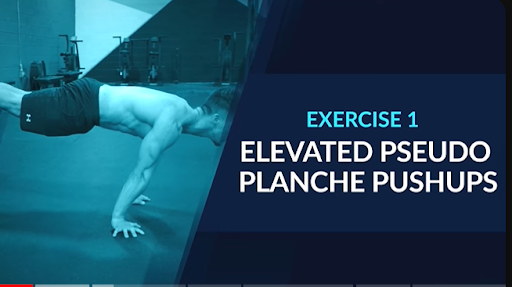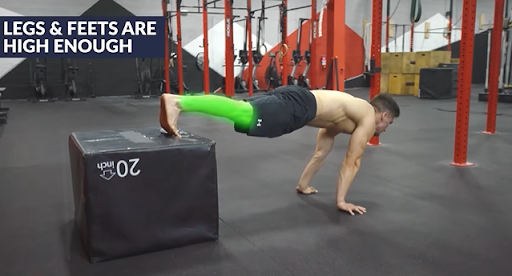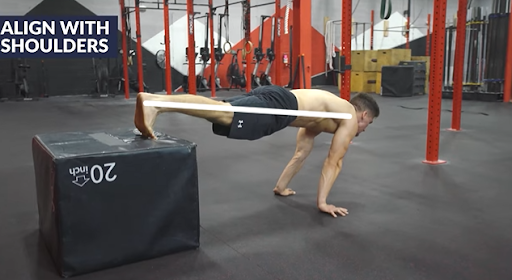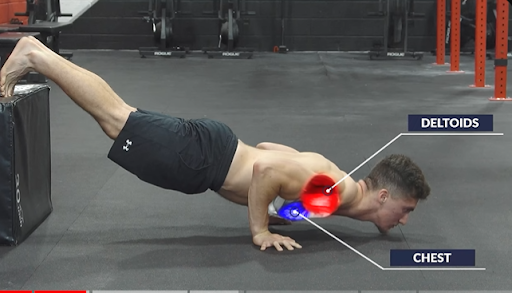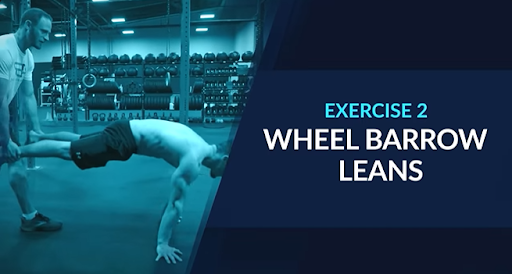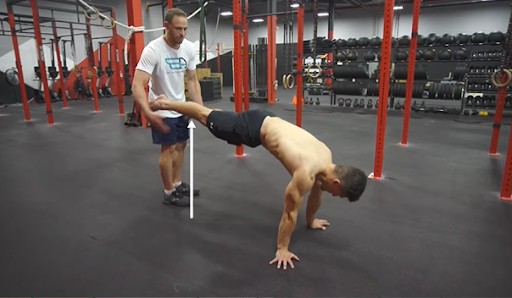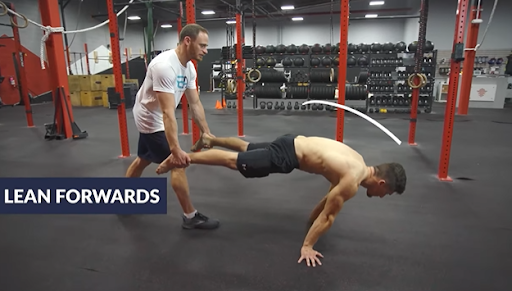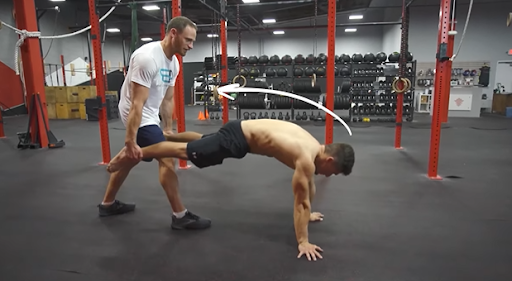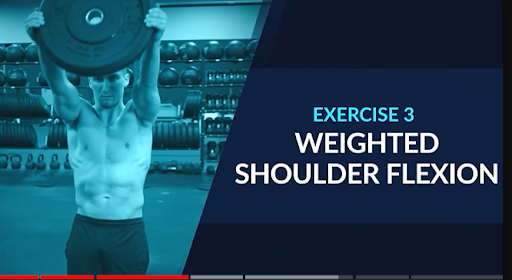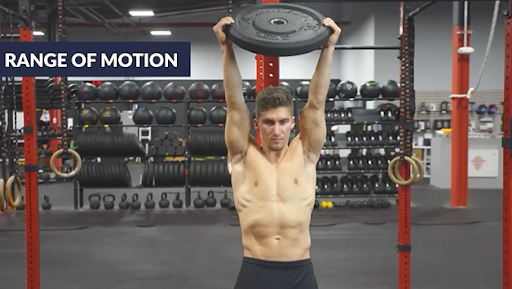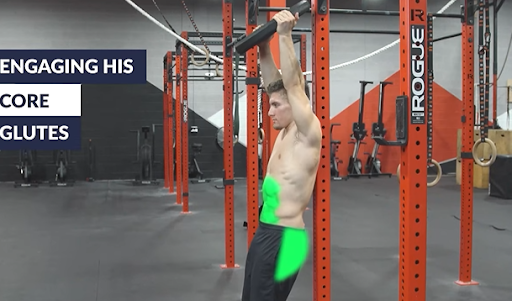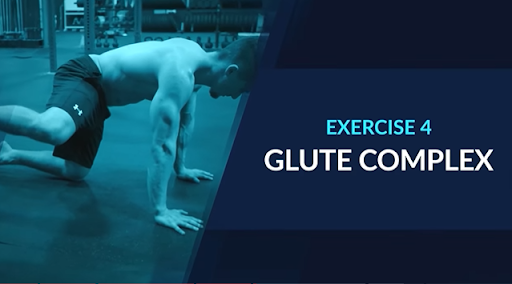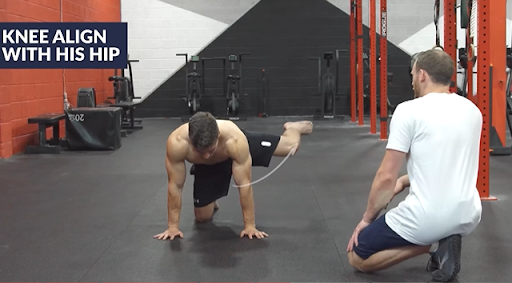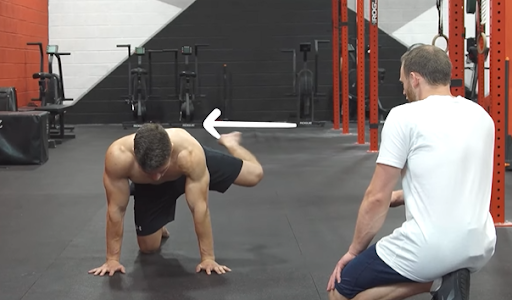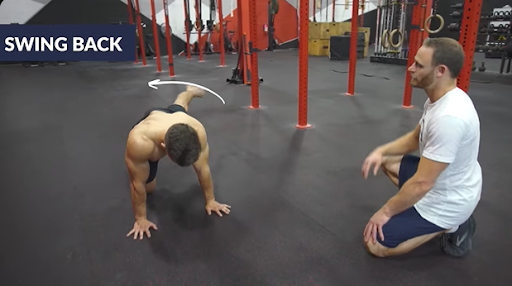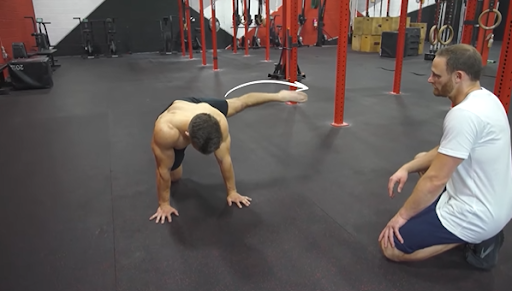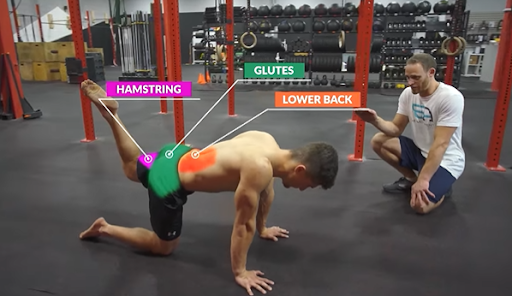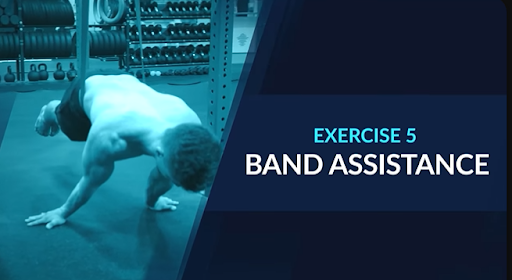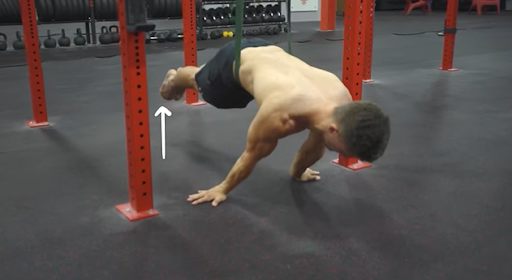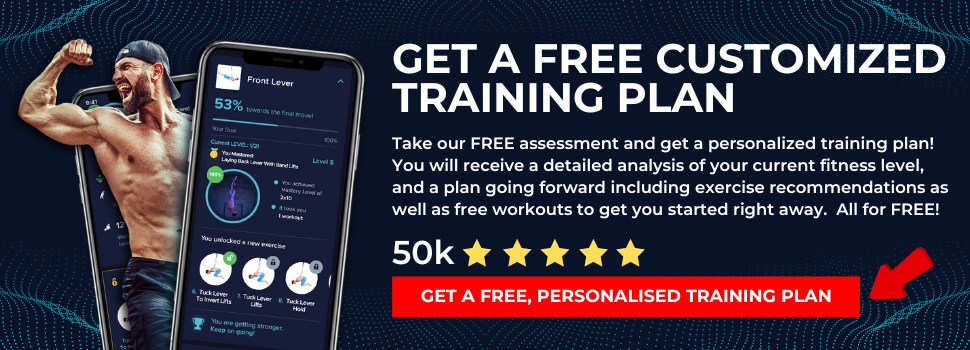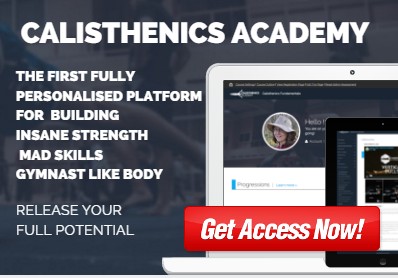Ever grappled with the frustration of hitting a plateau in your planche training?
If you’ve found yourself trapped in what feels like an endless loop, struggling to advance in your planche journey, then this article is tailored precisely for you. Understanding the challenges that emerge when aiming to elevate your skills amid stubborn progress is something everyone can relate to.
Now, whether you’re a seasoned athlete or just starting, we’ve all encountered those moments when improvement seems just out of grasp.
Fear not! In this article you will uncoveri 5 top drills, all aimed at boosting your planche abilities and breaking free from stubborn plateaus.
Let’s get started!
🔥What is a Planche?
A planche is a challenging gymnastic and calisthenics move where you use your hands to lift your body off the ground, keeping it parallel to the floor.
It looks like a horizontal plank; the goal is to hold this position without letting your feet touch the ground.
To perform a planche, you need significant upper-body and core strength and exceptional balance and control. There are different difficulty levels, from the easier tuck planche to the more advanced full planche, each requiring more strength and skill.
Looking to make progress with your planche? Check out our article on Planche Progressions
✨The Importance of Planche Drills
Planche drills are crucial for several reasons in the pursuit of mastering the planche:
- ✅ Strength Development: Planche drills target specific muscle groups, such as the shoulders, arms, and core, helping to build the strength required to hold the body parallel to the ground.
- ✅ Muscle Engagement: These drills teach the body how to properly engage and coordinate various muscles simultaneously. This is essential for maintaining the correct form during the planche, where precise muscle activation is paramount.
- ✅ Balance and Control: Achieving a planche demands exceptional balance and control. The drills focus on refining these skills, enabling individuals to find equilibrium and stability in the challenging horizontal position.
- ✅ Progression: Planche drills often offer progressive difficulty levels, allowing you to start at your current skill level and gradually advance. This incremental approach helps in avoiding injury and steadily improving performance.
- ✅ Skill Refinement: Mastering the planche is not only about strength but also about refining the technique. The drills serve as a platform for individuals to enhance their form, ensuring that they execute the planche with precision and efficiency.
Planche drills play a vital role in preparing the body both physically and mentally for the demands of achieving a successful planche. They contribute to the holistic development of strength, balance, and control, making the journey toward mastering this advanced gymnastic skill more effective and sustainable.
⚡️5 Top Planche Drills
Embarking on the journey to master the planche requires a strategic approach and targeted training. These 5 top planche drills are instrumental in building the strength, balance, and control essential for achieving this challenging gymnastic position.
1. 👊 Elevated Pseudo Planche Push-Ups
If you’ve hit a wall in your planche progress, this exercise is tailored to simulate and enhance the key muscle engagement required for the planche position.
Start by finding a raised surface, like a block. Make sure that when you put your hands on it, your legs and feet are in line with your shoulders. The goal here is to make an elevated position that mimics the planche stance.
Lean forward as far as possible, emulating the forward lean characteristic of the planche. Execute a push-up while holding the top position of each repetition, ensuring a complete lockout with each movement. This controlled approach effectively stimulates the deltoids and chest, mirroring the muscle engagement demanded by the planche.
This exercise serves as an excellent simulation of the planche hold, allowing you to intensify your focus on the shoulder muscles.
2. 👊 Elevated Wheelbarrow Leans
Next up is the elevated wheelbarrow planche lean. This exercise focuses on achieving a deep forward lean in the planche position, providing valuable feedback to help you refine your technique.
Begin by placing your hands on the ground, and lift one leg while your spotter (if you have one) helps guide you into a planche-like position.
Lean forward, and then push backward. The spotter assists in finding the endpoint where you can maintain control, offering support if needed to prevent overextension.
The goal is to communicate and determine your end range, ensuring a balanced and controlled planche position.
As you lean forward, you’ll notice a weight shift – the spotter’s hands may feel almost weightless, indicating that you’ve found a balanced point in the planche. This exercise is beneficial for developing the forward lean crucial for a successful planche. The spotter’s feedback is valuable in gauging your position and ensuring you achieve the proper forward lean.
3. 👊 Weighted Shoulder Flexion
For those looking to strengthen their planche muscles without the added challenge of balance, the weighted shoulder flexion exercise is a game-changer.
Using a weight plate or dumbbells, engage your core and glutes while going through the range of motion. This exercise allows you to control the tempo, providing a focused and controlled workout for your planche muscles.
It is essential to maintain a consistent breathing pattern throughout the exercise to enhance muscle engagement and endurance.
Unlike traditional planche drills, the weighted shoulder flexion exercise offers the advantage of targeting planche-specific muscles without the added complexity of balance. This focused approach allows individuals to isolate and strengthen the required muscle groups, laying a solid foundation for planche progression.
4. 👊 Glute Complex
To enhance your planche performance, incorporating lower back and glute exercises is crucial.
Starting in a quadruped position, this complex involves several movements to target the lower back and glutes effectively. Begin by lifting one leg laterally to the side, aiming to reach the highest point possible while aligning the knee with the hip. This lateral lift is performed for several reps, holding the leg at its highest point for a few seconds each time.
Following the lateral lifts, straighten and bend the leg out to the side for additional repetitions. The key is to maintain the position of the knee, ensuring the consistent engagement of the targeted muscles.
The next phase involves slowly swinging the leg back into a planche-like position behind you, simulating the full-body planche stance. After a series of repetitions, a holding position is introduced, emphasizing the importance of maintaining the proper planche form.
Continuing the complex, the leg is then bent up, simulating the half-layup planche position. This movement specifically engages the hamstrings, glutes, and lower back, emphasizing the importance of correct planche positioning throughout.
The suggested repetitions and holds can vary, allowing flexibility in tailoring the exercise to individual preferences. The key takeaway is to consistently incorporate lower back and glute exercises into your training regimen, as these muscle groups are often overlooked but play a vital role in maintaining the right positioning of the lower body during the planche.
5. 👊 Banded Assistance
To combat stagnation in your planche progress, use banded assistance. This drill utilizes a band to provide essential assistance, allowing you to refine your planche positioning and work on key shaping elements.
Attach the band as close to the center of mass as possible, focusing on the region near the belly button and hips. This strategic placement ensures that the band-aids in lifting the body, honing in on the crucial core elements of the planche.
Adjust the tension of the band to strike a balance between providing adequate support and maintaining a challenging workout. Sufficient tension allows the band to lift the body, enabling you to concentrate on shaping and engaging the essential planche muscles.
Explore different planche variations, such as the straddle or tuck planche, while incorporating banded assistance. This variation allows you to emphasize specific aspects, such as locking and overall shaping, in each unique position.
Integrate mirrors or cameras into your workout space to monitor your positioning during the exercise. Visual feedback is crucial for assessing your form and making real-time adjustments, ensuring optimal benefit from the banded assistance.
Utilize the banded assistance to concentrate on muscle engagement throughout the planche. This drill provides a controlled environment where you can isolate and strengthen the muscles involved in the planche, fostering improvement in both strength and form.
Remember, the banded assistance exercise serves as a valuable tool in your planche training toolkit, offering essential support while allowing you to focus intently on refining your technique. Incorporate this drill with feedback mechanisms and a variety of planche positions to maximize its effectiveness in overcoming plateaus and enhancing your overall planche performance.
Here’s a YouTube video on 5 TOP PLANCHE DRILLS that will SPEED UP your progress
🧐Frequently Asked Questions
🔎 Can planche drills be adapted for different skill levels?
Yes, planche drills often offer progressive levels of difficulty, making them suitable for both beginners and seasoned athletes. Start at a level that matches your current skill, and gradually advance as you gain strength and proficiency.
🔎 Are planche drills suitable for individuals with different body types?
Yes, planche drills can be adapted to various body types. The key is to focus on proper form, muscle engagement, and gradual progression, allowing individuals of different shapes and sizes to benefit from the drills.
🔎 Are there any common mistakes to avoid during planche drills?
Common mistakes include rushing progression, neglecting proper form, and not incorporating a variety of drills. Patience, attention to form, and a well-rounded approach are crucial for successful planche training.
🔎 How do I strengthen my arms for the planche?
Include exercises like planche leans, pike push-ups, straight arm planks, dumbbell shoulder presses, handstand training, banded assistance drills, and forearm planks. Consistent practice, gradual intensity increase, and proper form are key to building the required strength.
💥Conclusion
Incorporating these drills and tips into your training routine will breathe new life into your planche progress. Whether you’re struggling with balance, shaping, or overall strength, these exercises target specific aspects of the planche, helping you overcome plateaus.
If you want to work on your planche, The Movement Athlete offers specialized training programs designed to enhance your strength, balance, and control for achieving advanced calisthenics skills. Take the Assessment and get a personalized training plan including recommendations and workouts that you can use right away.

